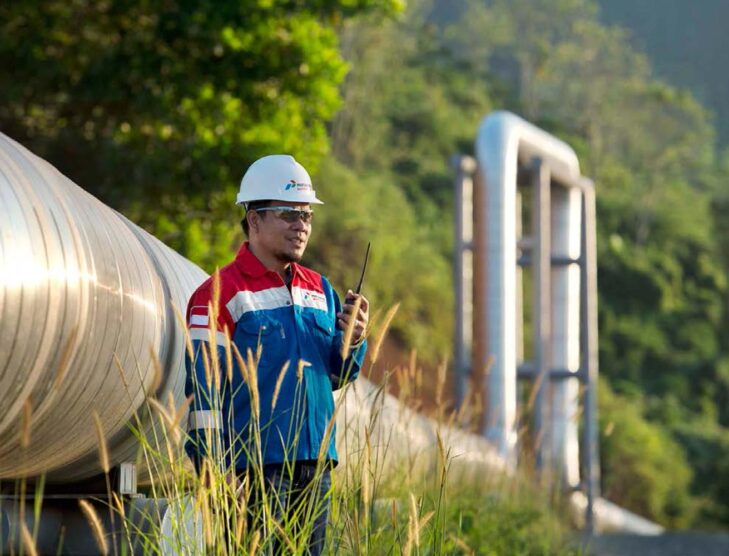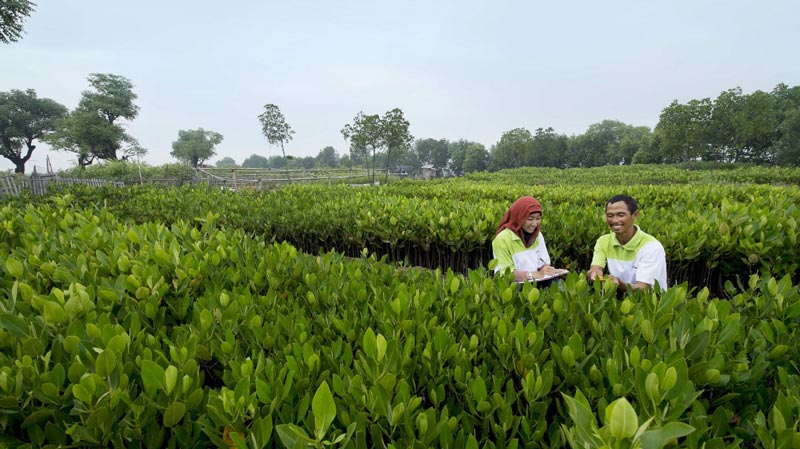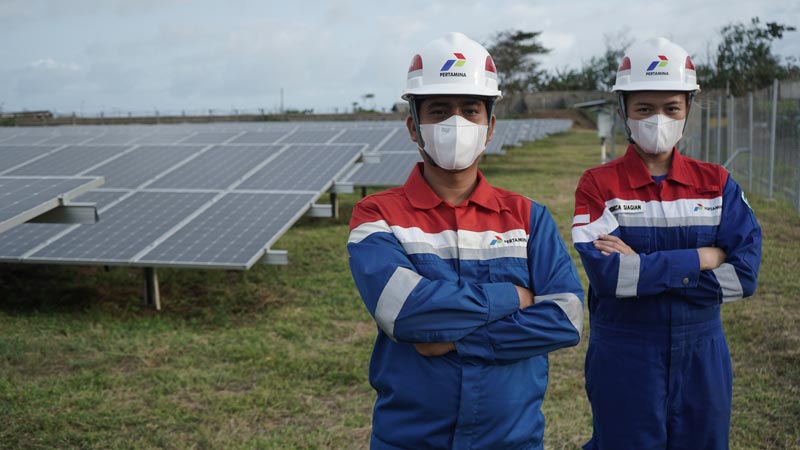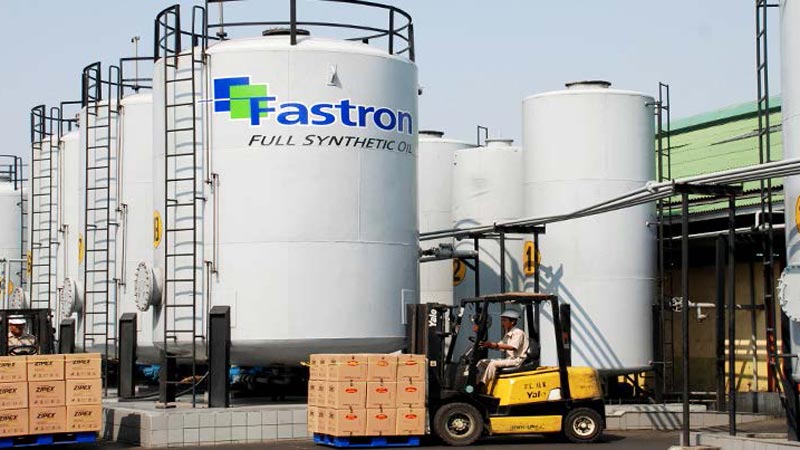
Pertamina maps out scenarios for Indonesia’s energy transition
In July 2021, the Indonesian Government announced its goal to achieve net-zero emissions by 2060 or sooner. While the timing may be misaligned with broader efforts of advanced economies to reach carbon neutrality by 2050, the Southeast Asian nation has ramped up its climate ambition. Previous expectations were that the developing nation would target 2070 as its net-zero date. Indonesia, the world’s eighth-biggest greenhouse gas (GHG) emitter, also aims to reduce GHG emissions by 29% by 2030, from 2010 levels.

Steps taken by many world leaders are insufficient to achieve global emissions reduction targets. These recent moves suggest Indonesia is taking its climate obligations more seriously. However, questions remain as to whether carbon neutrality is possible for the coal-addicted nation.
Pertamina, Indonesia’s behemoth state-owned oil and gas company, will play a central role in the island nation’s energy transition. In November 2021, the company signed a memorandum of understanding (MoU) with ExxonMobil to evaluate the potential for large-scale deployment of low-carbon technologies in Indonesia.
During the Pertamina Energy Webinar 2021, streamed live on December 7, 2021, the Pertamina Energy Institute (PEI) shared a perspective on the future of the energy sector, including three possible scenarios for the nation’s energy transition. The theme of the webinar was Energizing Your Future with the event open to the public and attended by numerous stakeholders including regulators, business representatives, observers and academics.
Dr. Hery Haerudin, vice president of PEI, provided details on the three transition scenarios—Low Tran sition (LT), Market Driven (MD) and Green Transition (GT), that were developed as part of the Pertamina Energy Outlook 2021 (PEO). The study included the steps necessary to achieve each transition target, with the company indicating the research would play a vital role in developing long-term business plans.
Haerudin noted that the scenarios considered economic conditions and predicted the long-term needs of the user community. Indonesian growth rates were estimated at 4.55% in 2022. The research indicated growth would sit around 2% by 2060 due to changes in consumption and productivity associated with the rate of population increase.
Huge opportunity to reduce carbon emissions
Indonesia has a huge opportunity to reduce carbon emissions. However, only the Green Transition scenario will realize net-zero emissions by 2060 or sooner, says Haerudin. Features of GT are rapid emissions reductions, with transportation and power plants the focus of carbon decreases.

Emissions are expected to peak in 2030 at 670 million tons of carbon dioxide equivalent (CO2e) and will decline to 270 million tons of CO2e in 2060. This picture is consistent with a 2 degrees Celsius global warming view, though it exceeds the preferable limit of 1.5 degrees Celsius, compared to pre-industrial levels. 270 million tons of remaining CO2e still needs to be accounted for, with the PEO proposing natural carbon sinks as one option to achieve net-zero, as well as a combination of natural-based solutions and carbon capture utilisation and storage (CCUS).
Oil demand will peak in 2028 under the GT scenario. By 2060, only 18% of the energy mix will come from fossil fuel, with the remainder derived from renewable energy. Oil and coal are heavily impacted, while gas usage persists due to increasing prevalence as a feedstock in the industrial sector.
Unsurprisingly, electrification is the big winner with Haerudin indicating it will become the new norm, catering for daily needs across all sectors. Almost all vehicles on the road in 2060 will be electric and 100% of four-wheel vehicle sales will be electric by 2050. Two-wheel sales will achieve the milestone a decade earlier. Electric stoves will follow a similar trajectory. According to the energy ministry, half of the planned 40.6 GW generation capacity to 2030 will come from renewables.
Achieving the objectives of the Green Transition requires the successful implementation of B50 (50% biodiesel) and A20 (15% ethanol, 5% methanol) biofuels, a moderate low-carbon fuels penetration in the industrial sector and rapid fuel switching penetration in households.
New technologies needed for green transition
New technologies need to be commercialised immediately on a massive and economic scale, says Haerudin. The Pertamina study calls for greater cooperation between the government, entrepreneurs and various sectors of society to make the Green Transition a reality. The PEO also recommends the establishment of a national-level institution to collaborate with all stakeholders to achieve the nation’s desired energy goals.
The alternative scenarios in the Pertamina Energy Outlook are less ambitious and, hopefully, less likely. The Low Transition scenario continues to be characterised by a fossil fuel system that sees emissions peak in 2060 and oil demand summit in 2047. In this scenario, only 40% of power generation is from renewables in 2060 and the establishment of new coal power plants ceases after 2045. LT also includes the implementation of B30 biodiesel blends and four-wheel electric vehicle (EV) sales reaching 80% in 2060, half of which are from battery electric vehicles (BEV).

In the Market Driven scenario, 100% of new car sales in 2060 are electric, with 80% BEVs. MD comprises 60% renewables and assumes no new coal power plants after 2040. Emissions peak in 2045 and oil demand two years earlier. This scenario is consistent with a 2.5-2.7% global warming view, according to the Pertamina Energy Outlook.
Of course, there is no guarantee Indonesia will achieve the Green Transition scenario. Mitigating climate concerns does not come easily, nor cheaply. A report issued by Bappenas, the Ministry of National Development Planning, has highlighted the extreme costs associated with transforming Indonesia into a net-zero economy by 2060. The report outlined average investments of USD150 billion to USD200 billion per year in the current decade, with investment soaring to over USD2 trillion per year in the decade to 2060. Bappenas suggests that carbon pricing and phasing out of fuel subsidies can contribute to transition funding. However, Haerudin has also emphasised the importance of foreign assistance in the energy transition, indicating it cannot be funded from domestic sources alone.
Regardless of the cost, questions have been asked about Indonesia’s level of commitment to net-zero. Indonesia has pledged to stop building new coal-fired power projects from 2023, yet it remains heavily reliant on the dirtiest of fossil fuels. The construction of new coal power plants already signed is continuing, including the development of the Suralaya coal power plant on Java Island, one of the largest in Southeast Asia. New coal plants will continue to operate for decades to come.
In an analysis of Indonesia’s Long-Term Strategy for Low Carbon and Climate Resilience 2050, submitted on July 22, 2021, IHS Markit indicated that the island nation’s plans to decrease emissions look “technically and financially questionable.” The information services company questioned the reliance on carbon capture utilisation and storage as opposed to the phaseout of coal power generation, indicating that the cost of CCUS is likely to remain high, adding up to 78% to the levelized cost of electricity of traditional coal-fired power plants by 2050.







